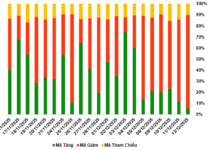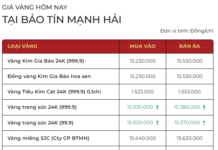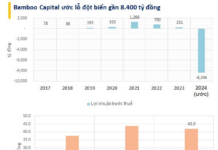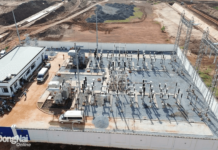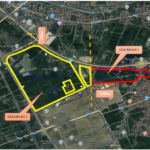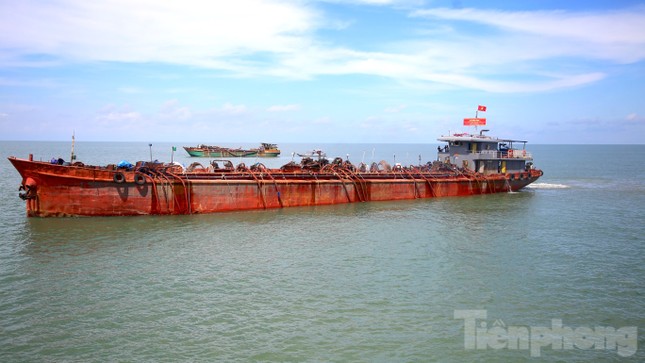
In June, the People’s Committee of Soc Trang province, in collaboration with My Thuan Project Management Unit (Ministry of Transport), commenced marine sand mining at sea area B1, about 40km from Tran De fishing port in Tran De district, Soc Trang. This is the first marine sand mine in the Mekong Delta region, aiming to provide fill for key projects under the National Assembly’s special mechanism.

Mr. Do Minh Chau, Deputy Director of VNCN E&C Construction and Technical Investment Joint Stock Company, stated that each sand barge arriving at the construction site undergoes multiple salinity tests, with results reported to local authorities for supervision.
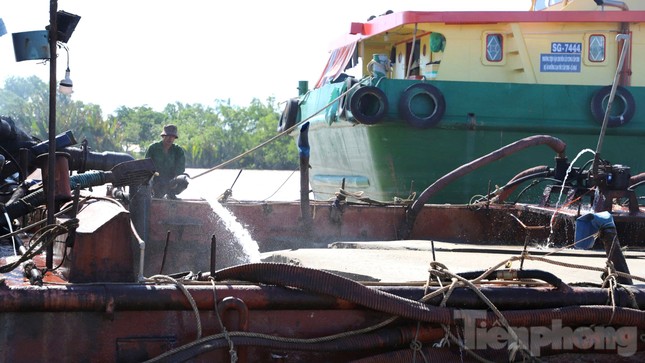
When the barge’s cargo hold is full of sand, workers measure the salinity on-site, which ranges from 22 to 25‰. The barge then proceeds to a transshipment point on the Hau River in Long Phu district, Soc Trang province, where fresh water is pumped into the hold to wash and reduce the salinity of the marine sand.

Once the salinity of the sand decreases to approximately 13-17‰, it is transferred from the suction barge to a flat-bottomed boat. Upon reaching the construction site, the sand is once again washed and tested for salinity. According to Mr. Chau, the salinity of the water in the rivers and canals near the construction sites in Kien Giang and Ca Mau provinces is about 22-27‰, higher than the salinity of the washed marine sand (around 20-22‰). As per transportation standards, the salinity of fill material must be less than 5% – equivalent to 50‰. Thus, the washed marine sand meets the requirements set by the transportation sector for roadbed filling.

However, according to Mr. Chau, as this is the first time marine sand mining has been organized to serve the construction of an expressway project, the relevant units are uncertain about the procedures, mining plan, and extremely challenging mining conditions, such as rough seas, strong winds, and long transportation distances, resulting in lower-than-expected volumes of marine sand delivered to the construction site. The number of sand-mining vessels operating at sea is limited, and they are registered and operate according to specific areas and projects. Therefore, mobilizing vessels to meet the project’s capacity requirements has been slower than expected.
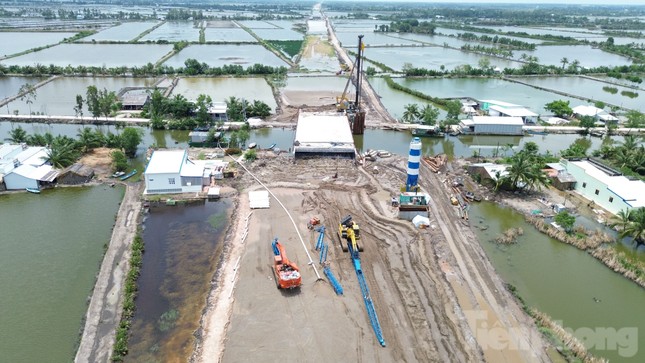
More than two months after the commencement, the total volume of marine sand delivered to the project has exceeded 90,000 cubic meters. In early September 2024, the mining capacity was increased by 5,500 cubic meters/day, bringing the total to nearly 18,000 cubic meters of marine sand/day. The contractor is mobilizing additional mining equipment to ensure a capacity of 20,000 – 30,000 cubic meters/day to meet the project’s schedule.

To transport sand from Soc Trang province to the Can Tho – Ca Mau expressway construction site, vessels must travel over 180km, taking approximately 32-34 hours. Photo: P.V.
Prior to this, the People’s Committee of Soc Trang province had granted a confirmation for areas B1.1 and B1.2 to VNCN E&C Construction and Technical Investment Joint Stock Company for sand mining to serve the construction of the Can Tho – Ca Mau Expressway project.
On June 29, the contractor began mining marine sand using suction dredgers, also known as “turtle ships,” which operate by sucking up sand from the seabed. The sand mining area is delimited by four specific coordinate points, with a permitted mining depth of 7.5 meters and a permitted height of 5 meters from the sea surface. The sand mining is scheduled to continue until December 21, 2024, with operating hours restricted to 7 AM – 5 PM daily, excluding nighttime operations.
The Can Tho – Ca Mau Expressway project, with a length of over 110 kilometers and a total investment of more than VND 27,500 billion from the state budget, commenced on January 1, 2023. The project is divided into two components: the Can Tho – Hau Giang section, spanning over 37 kilometers, and the Hau Giang – Ca Mau section, covering more than 73 kilometers. The expressway is expected to be completed by 2025.
Coping with Drought, Salinity, and Water Shortages in the Mekong Delta
The Mekong Delta, a labyrinth of canals and waterways, faces a peculiar challenge: an abundance of water during the rainy season, yet a dire shortage of freshwater during the dry months, exacerbated by drought and saltwater intrusion.
The Luxury Apartment Stella Icon: A Rising Star in the Mekong Delta Property Market
The recent groundbreaking of the luxury apartment project, Stella Icon, within the KITA Airport City development is injecting excitement into Can Tho’s real estate market. This project is set to propel the city’s status as the capital of the Mekong Delta, transforming it into a vibrant and dynamic hub for the entire region.




